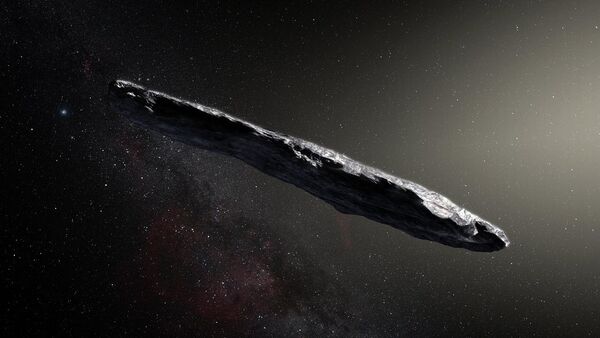Astronomers at the ESO in Chile have announced their observations of the first asteroid — "Oumuamua" meaning "Scout" — originating from outside Earth's solar system, with the celestial body being unlike any previously seen. It was first discovered on October 19.
"It took a few days to realize how weird, how exceptional it was, we started observing it really in detail on October 25," astronomer Olivier Hainaut who was part of the team observing the asteroid told Sputnik.
#ESOCastLight VLT discovers first #interstellar asteroid is like nothing seen beforehttps://t.co/aMNjjrUWXg pic.twitter.com/IwAwbLCOhs
— ESO (@ESO) November 20, 2017
The highly unusual object does not have a discernable orbit. Mr. Hainaut explained it is merely crossing the solar system, making the ESO's one encounter with the body the only opportunity to study it.
"Normally asteroids orbit the sun. It is not a member of our solar system. Just that makes it completely exceptional. It's the first time that we are studying something that is coming from another planetary system," he said.
ESO's astronomers carried out photometrical measurements of the asteroid, using the change its colors and the variations of its brightness to determine its approximate size and composition.
ESO's #FORS instrument on VLT helps astronomers better observe interstellar visitor. (illustration) https://t.co/qZjxG1ZLOm pic.twitter.com/OYdqE8RZcd
— ESO (@ESO) November 20, 2017
The asteroid is also remarkable for its highly unusual shape, its two longer sides being at least ten times as long as its shorter sides. Mr. Hainaut described the body as resembling a "fat cigar, rotating in space. More often asteroids are shaped like a potato."
It was also found to comprise a single large piece of rock, rather than sand, snow or other loose substances held together by gravity.
"The composition of asteroid is very similar those in our solar system, it means that our neighboring stars are just like ours in terms of substances," Olivier Hainaut said.
The images of asteroid will now be studied at length.

